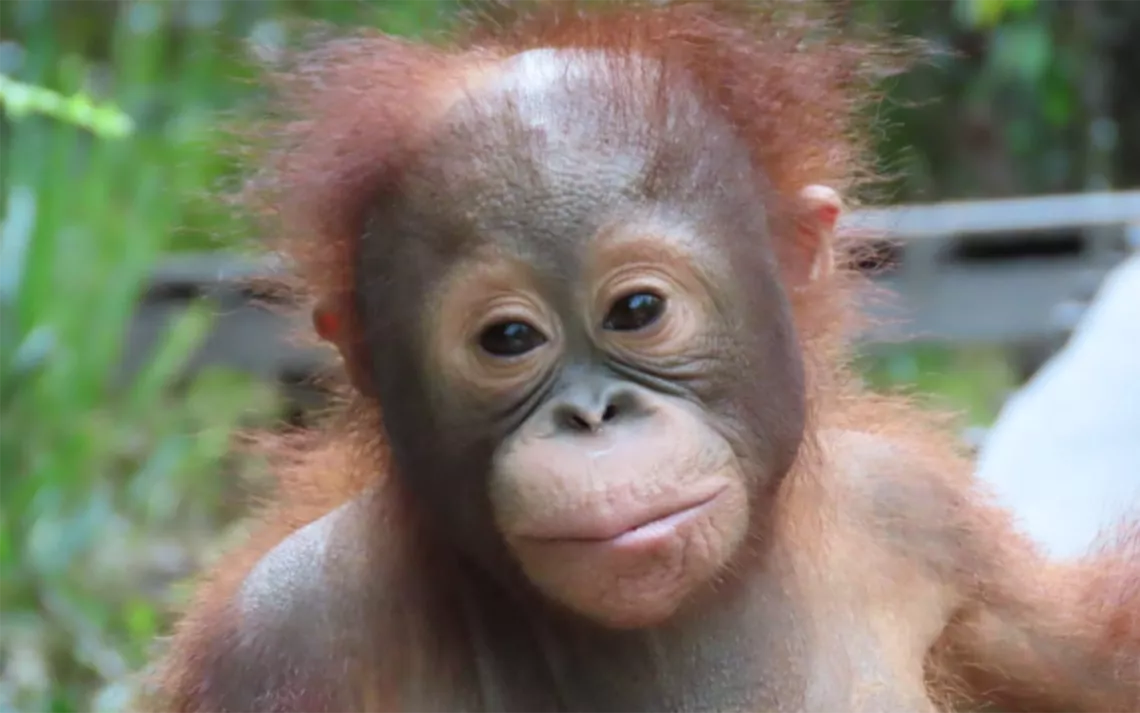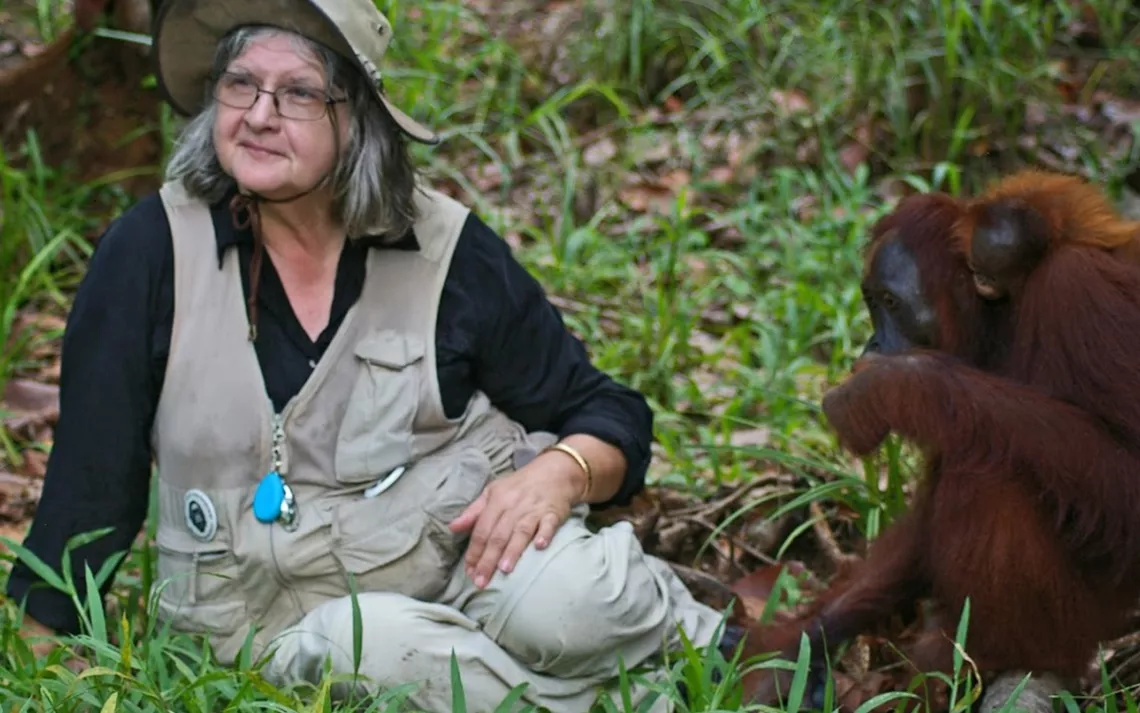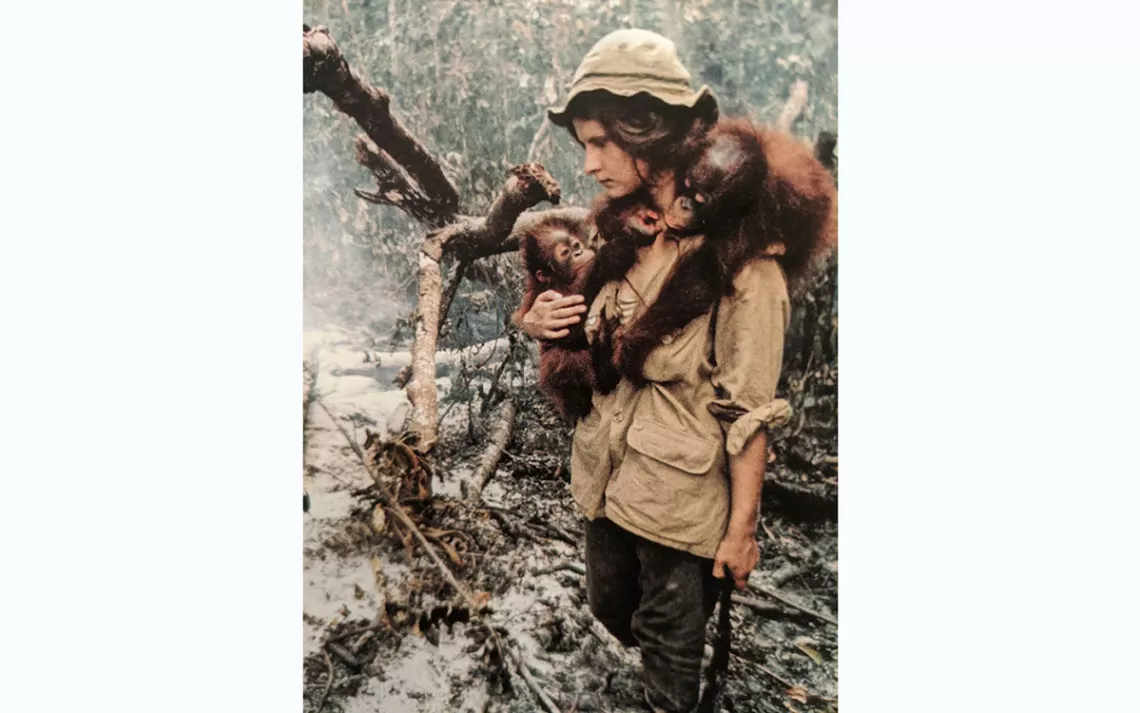Biruté Mary Galdikas Knows Orangutans
The renowned researcher has spent her life studying the primates

Photos courtesy of Orangutan Foundation International
Biruté Mary Galdikas says that while she is not a mind reader, she can often tell what orangutans are thinking. That may be because she’s been observing them in the wild for five decades.
In November, Galdikas, considered to be the world’s leading expert on orangutans, officially celebrated 50 years in the field. Her ground-breaking research involves some of the longest continuous studies of wild orangutans and one of the longest studies of any wild mammal by one principal investigator.
“I’ve always felt I was born to study orangutans,” Galdikas told Sierra. She remembers seeing a photograph of one as a young girl and feeling an instant connection. To her, the ape looked like a human being, with mesmerizing eyes.
“It was the eyes that brought me to orangutans,” Galdikas said. When those red-haired apes look at you, it's like “they're looking straight through you into your very soul.”
Galdikas started her orangutan behavioral research as a graduate student at UCLA, spending six months visiting the Los Angeles Zoo every day—sometimes staying for just an hour, sometimes for the entire day. She observed the orangutans along with the crowd of zoo-goers, or sometimes she would sit behind the cage or above it, feeling a bit on display herself.
In 1971, Galdikas arrived in the Tanjung Puting Reserve in Borneo to establish the Orangutan Research and Conservation Program. She set up “Camp Leakey,” named after her mentor, renowned anthropologist Louis Leakey, who also trained Jane Goodall and Dian Fossey. There, she immersed herself completely in the orangutans’ jungle habitat and began meticulously documenting the animals’ daily lives.
At the time, orangutans were the least understood of the great apes. According to Galdikas, nobody really knew anything about them, so she wasn’t surprised by the fact they were so humanlike in their behaviors. “I didn't know how to be surprised,” she said.

Her research on orangutan behavior, habitat, and diet expanded scientific knowledge of orangutans in crucial ways. It was Galdikas who first observed the long intervals between births common among orangutan mothers—averaging 7.7 years. She also recorded the animals’ widely varying diet, which includes over 400 types of food.
In 1986, Galdikas cofounded the Orangutan Foundation International, a nonprofit organization that helps educate local people about orangutans and their habitats and advocates for the restoration and protection of rainforests. According to her own calculations, she has spent over 100,000 hours observing the primates. She’s also contributed to the release of over 500 orangutans back into the wild.
The name “orangutan” means "man of the forest" in the Malay language. The apes live solitary existences, subsisting on a diet of wild fruits, barks, leaves, flowers, and insects. Galdikas has observed males traveling for over a month without encountering other orangutans. Once, she followed a female orangutan who remained alone for 30 days. The primates spend most of their time in trees, making nests of vegetation in which to sleep and rest.
A reoccurring theme when Galdikas talks about her work is how similar orangutans are to humans. The two species share at least 28 physical traits. “You’re looking at a fully conscious thinking, living being that is basically the same as us,” Galdikas said.

Much has changed over the past 50 years, Galdikas points out, and not for the better. The Bornean orangutan is now critically endangered. Deforestation and habitat loss are not only making climate change worse but also contributing to the disappearance of the species, as humans replace their natural habitat with palm oil plantations and other forms of agriculture. Illegal and unsustainable logging is also a major threat.
The cultivation of palm oil takes the biggest toll. Palm oil is found in 50 percent of all Western household and food products and is a common ingredient in shampoo, toothpaste, peanut butter, makeup, and more. Between 1,000 to 5,000 orangutans are killed every year because of palm oil concessions.
Galdikas says that in order to save orangutans, the forests must be preserved. Orangutans are an umbrella species, playing a crucial role in seed dispersal and maintaining a healthy forest ecosystem. While the orangutans need the forests, the forests need these great apes.
“There’s a lot of things that orangutans do to help the forests, and we need the forests,” Galdikas said. “We need all the forests we can get, especially the tropical rainforest, which has been under assault for a number of decades.”
“I hope that orangutan populations in the wild do not go extinct. If current trends continue, ultimately what's going to happen is we're just going to have a few orangutans left.”
 The Magazine of The Sierra Club
The Magazine of The Sierra Club



